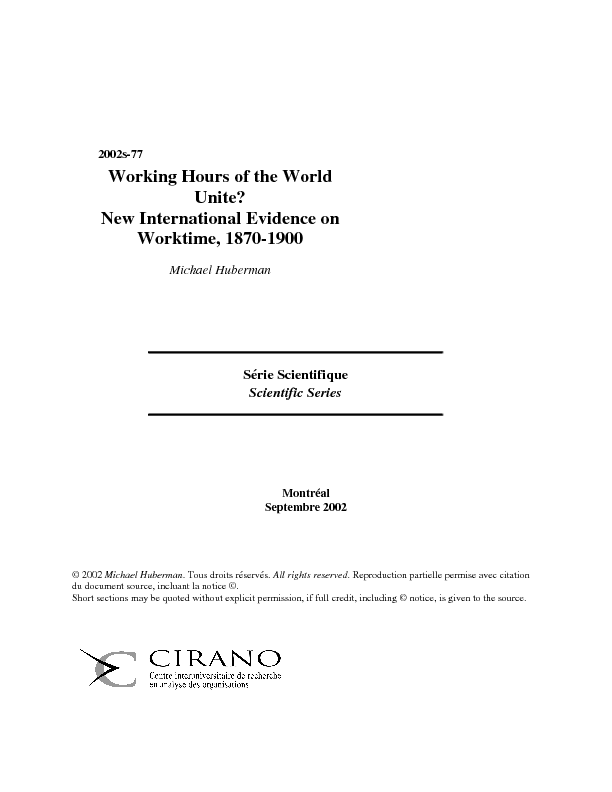Working Hours of the World Unite? New International Evidence on Worktime, 1870-1900
Assembled by Angus Maddison, the most widely consulted data set on worktime in the long nineteenth century is seriously flawed, because it assumes all countries had British work hours. This paper constructs new measures of worktime in Europe, North America and Australia between 1870 and 1900. With the exception of Great Britain and Australia, work hours were very long. Trends in worktime varied across countries. The length of the workweek was inversely related to the level of income, but there was only a modest tendency toward convergence or catch-up as theory anticipates. National work routines and laws restricting working hours explain some of the divergence, but sectoral effects operated in the other direction. Competing-goods industries, like textiles, saw a race to the bottom. Because long hours were a source of competitive advantage, even the Lancashire textile worker set his watch to Italian time.
[ - ]




